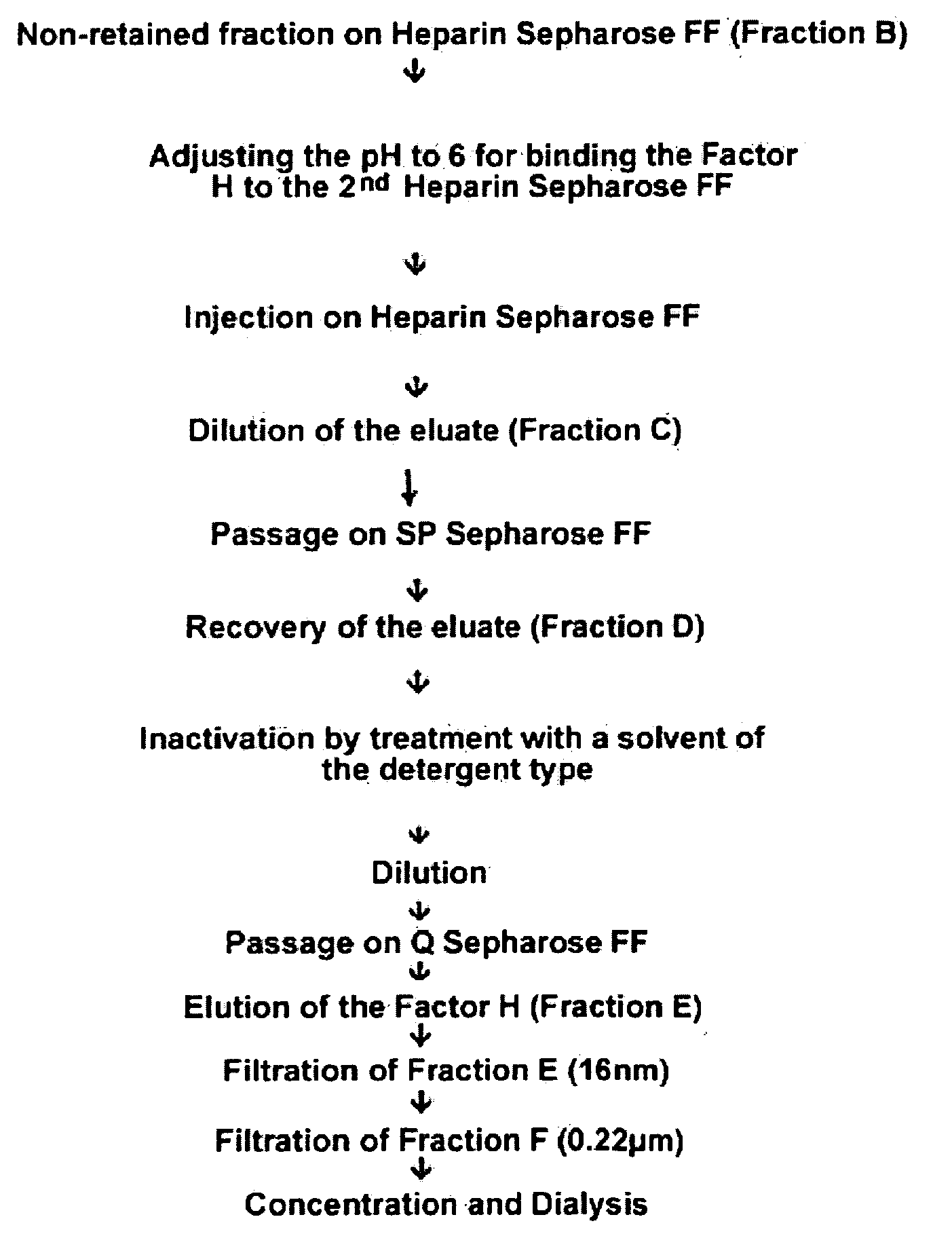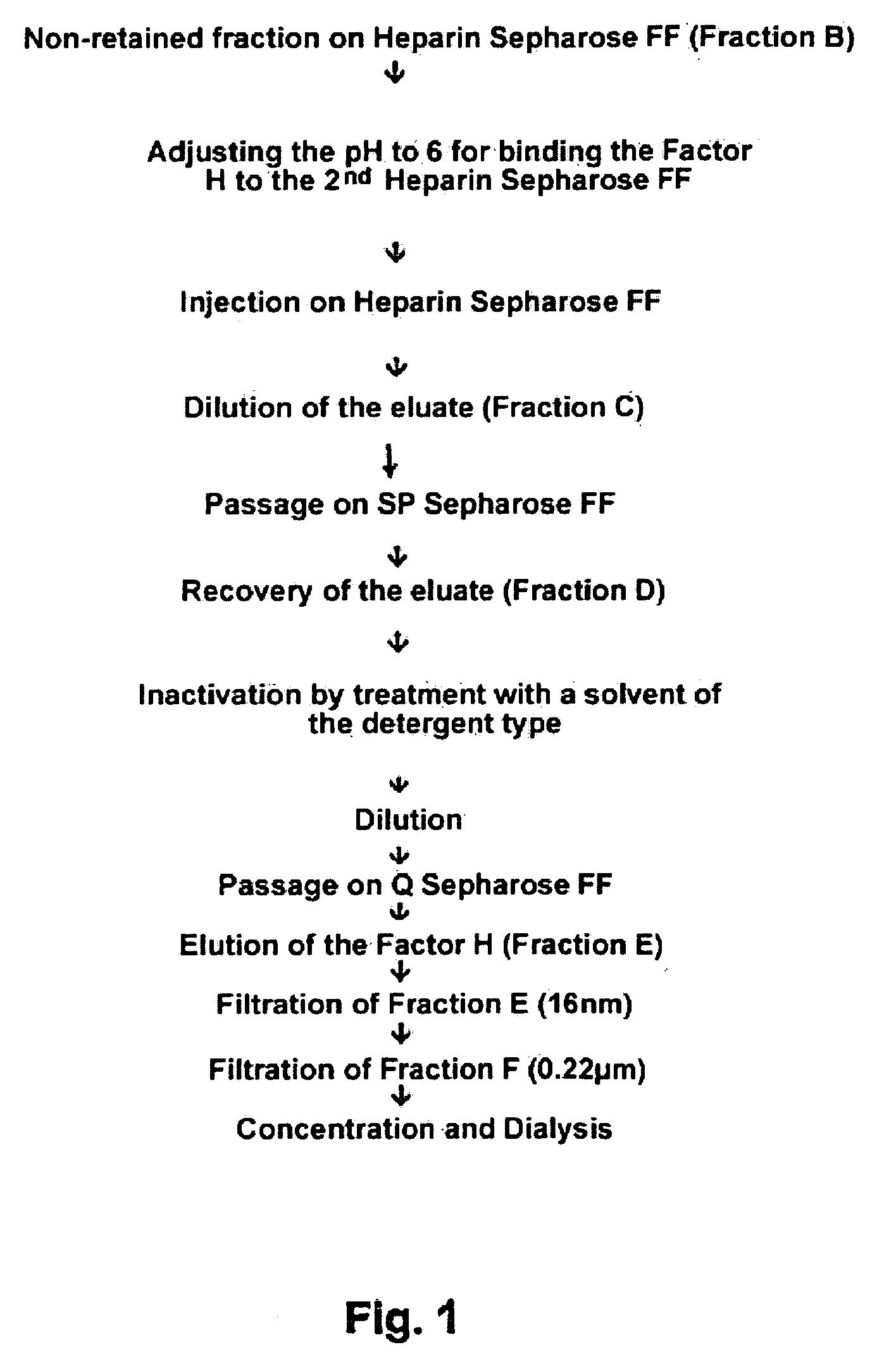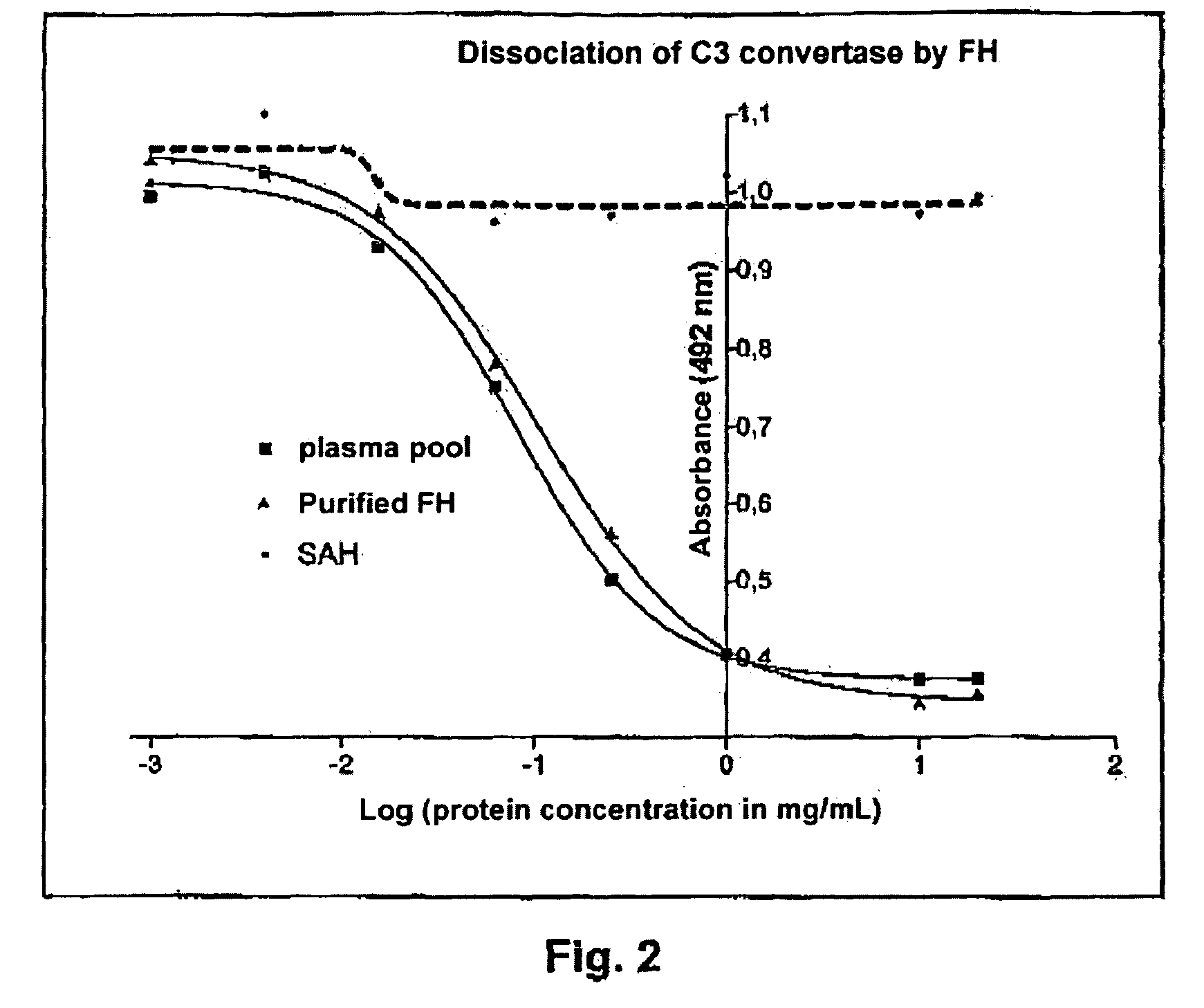Method For Preparing a Factor H Concentrate and the Use Thereof in the Form of a Drug
a technology of factor h and concentrate, which is applied in the field of hemolytic uremic, can solve the problems of increasing the standard risk of frozen fresh plasma perfusion, prolonging treatment time, and hyperphosphatemia in hus patients, so as to achieve the effect of restoring the deficiency of factor h, reducing the injection volume and the injection time, and safe, stable and effective products
- Summary
- Abstract
- Description
- Claims
- Application Information
AI Technical Summary
Benefits of technology
Problems solved by technology
Method used
Image
Examples
example 1
Method for Purifying the Factor H
[0098]The method applied for purifying the Factor H is illustrated schematically in FIG. 1.
[0099]Human frozen fresh plasma is unfrozen at a temperature between 1° C. and 6° C., and then the plasma supernatant of the cryoprecipitate is separated from the insoluble fraction of the cryoprecipitate by centrifugation.
[0100]The plasma supernatant of the obtained cryoprecipitate, the Factor H concentration of which is comprised in a range from about 400 to about 500 mg of Factor H / liter, is submitted to chromatography on a resin / gel of the anion exchanger type (for example, a gel / resin of the DEAE Sephadex type), in order to separate the Factors which depend on vitamin K, from the plasma supernatant by retaining these Factors on the resin / gel.
[0101]The non-retained plasma supernatant fraction (fraction A), the Factor H concentration of which is comprised in a range from about 400 to about 500 mg of Factor H / liter, is then subject to affinity chromatography ...
example 2
Method for Dosing the Activity of the Factor H
[0110]The wells of an ELISA plate (of the 96-well type) are covered with a solution of purified C3b protein with a concentration of 2.5 ·g / mL (Calbiochem: ref. 341274) in a 0.2 M sodium carbonate buffer. To do this, 100 μL of solution are introduced into the wells and the plates are incubated for 1 hour at 37° C. and one night at 4° C.
[0111]Three washes of 300 μL / well are performed with a solution of 10 mM sodium phosphate buffer, 25 mM NaCl, 0.1% Tween 20 at pH 7.2.
[0112]The aspecific sites are then saturated by incubation for one hour at 37° C. with 300 μL / well of a solution of 10 mM sodium phosphate buffer, 25 mM NaCl, Tween0.05%, at pH 7.2, and containing 1% BSA. Next, a wash of the wells is performed with the washing solution described earlier.
[0113]100 μL of a solution containing:[0114]75 μL of a 20 mM NiCl2 mother solution (final concentration 1.5 mM);[0115]4 μL of Factor B (Calbiochem ref. 341262) at a concentration of 1 mg / mL;[0...
PUM
| Property | Measurement | Unit |
|---|---|---|
| Acidity | aaaaa | aaaaa |
| Acidity | aaaaa | aaaaa |
| Acidity | aaaaa | aaaaa |
Abstract
Description
Claims
Application Information
 Login to View More
Login to View More - R&D
- Intellectual Property
- Life Sciences
- Materials
- Tech Scout
- Unparalleled Data Quality
- Higher Quality Content
- 60% Fewer Hallucinations
Browse by: Latest US Patents, China's latest patents, Technical Efficacy Thesaurus, Application Domain, Technology Topic, Popular Technical Reports.
© 2025 PatSnap. All rights reserved.Legal|Privacy policy|Modern Slavery Act Transparency Statement|Sitemap|About US| Contact US: help@patsnap.com



